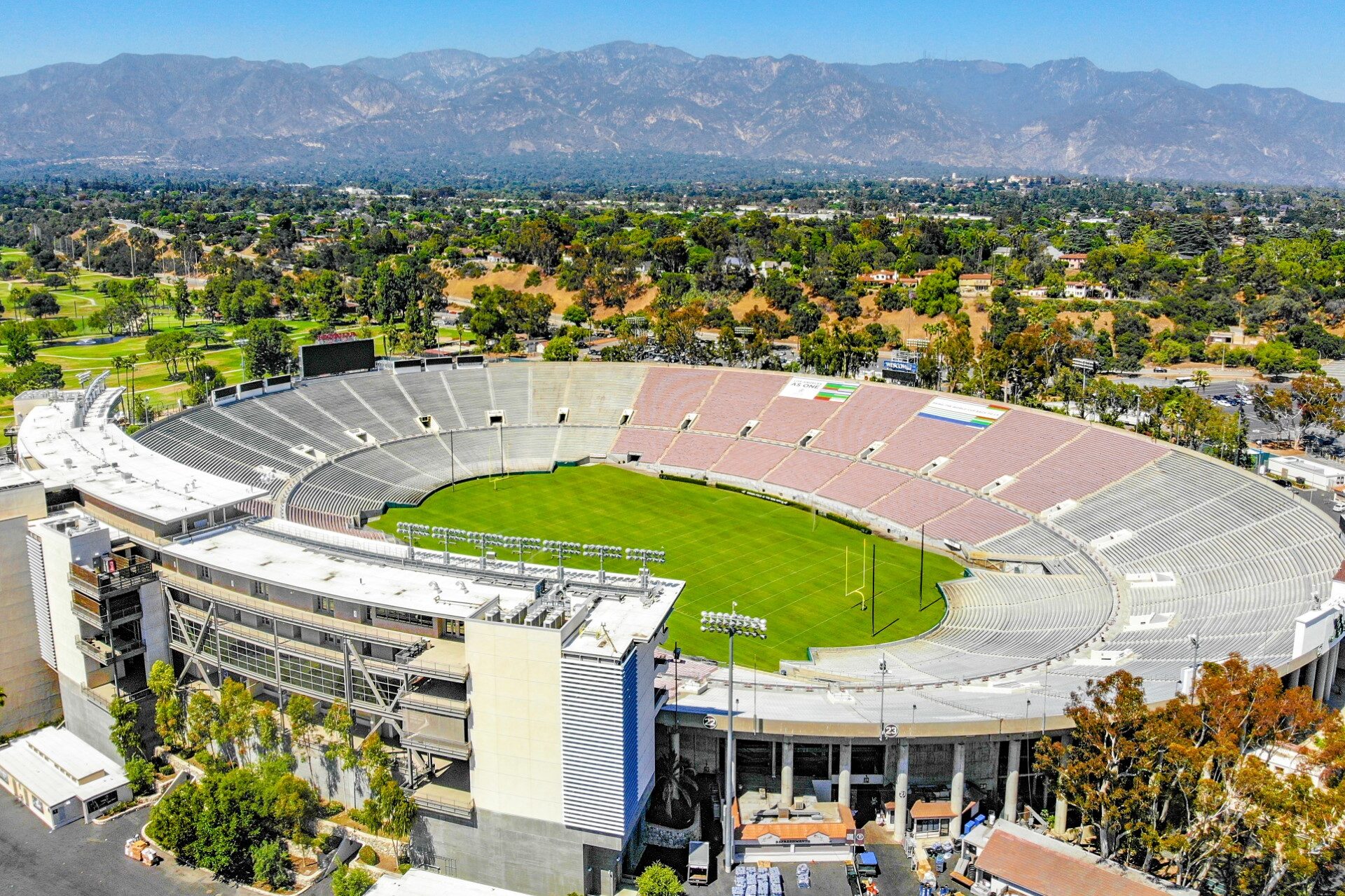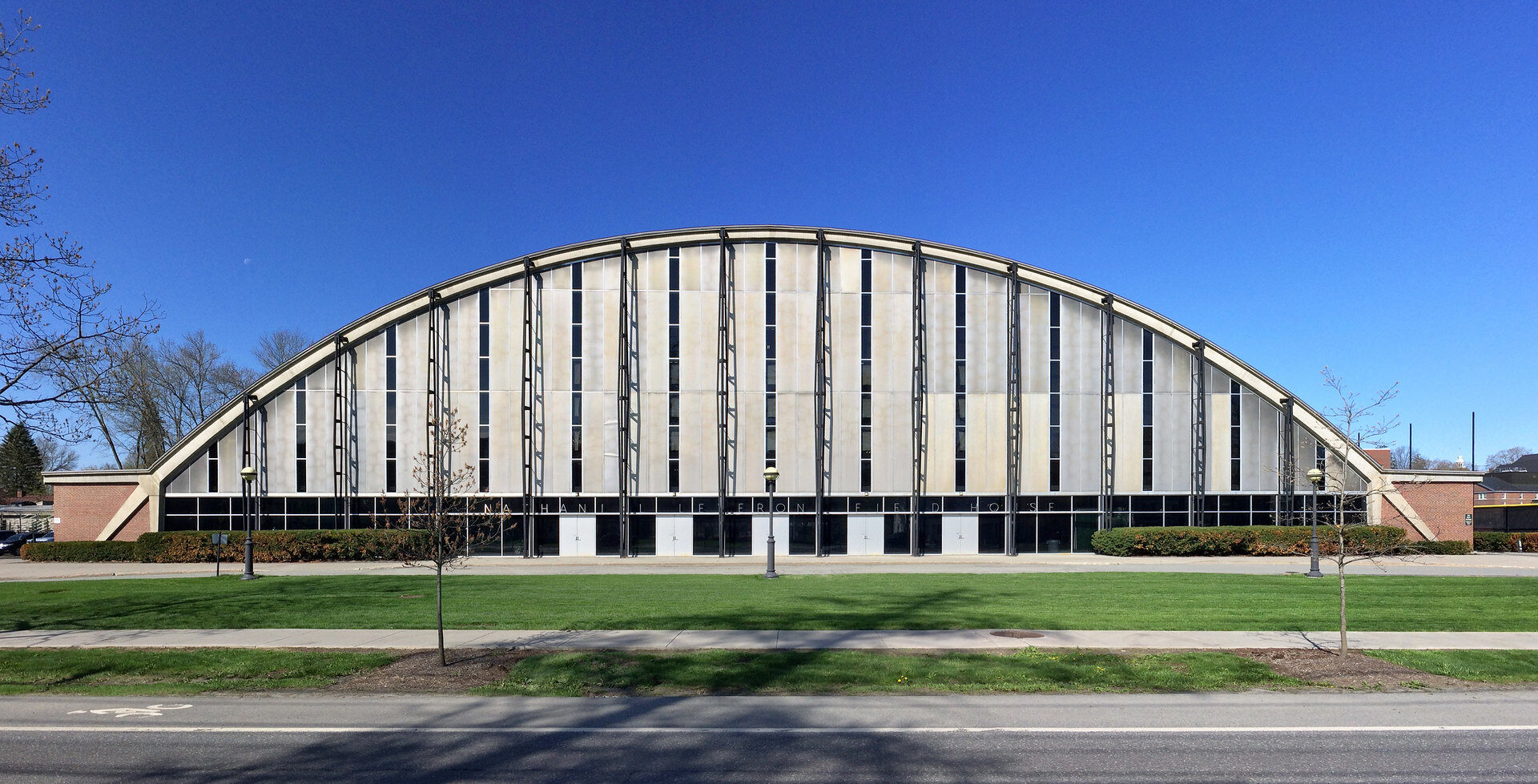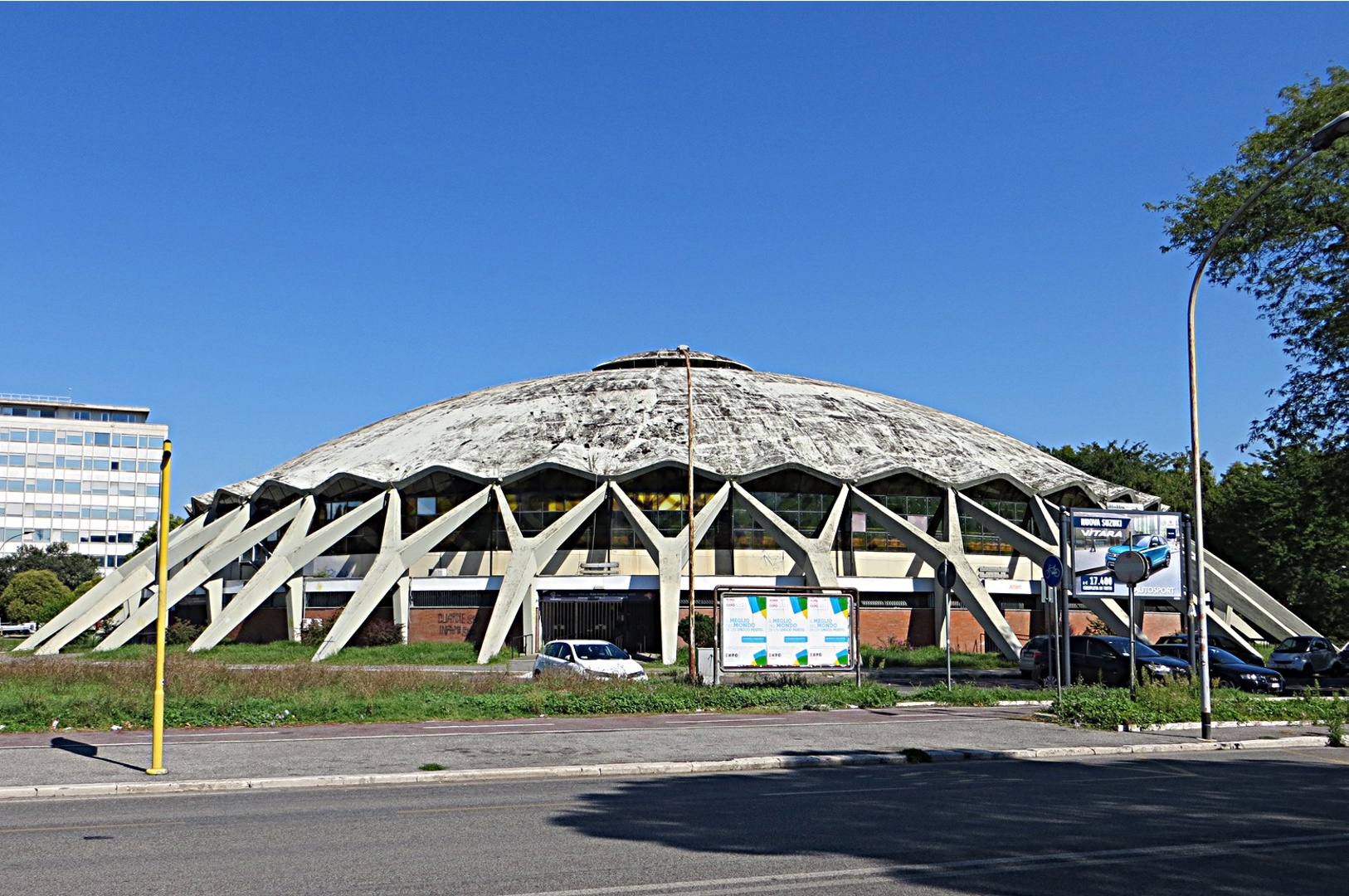The ’94 World Cup @ The Rose Bowl in Pasadena
(Ted Eytan, CC BY-SA 4.0)
kdA believes in the power of transparency in higher education and that there is an inherent performative aspect to the art of honing and perfecting a craft.
The recently completed UCLA Ostin Basketball Center focuses on high-level and highly specialized professional and scholastic training.
Even among institutions with strong traditions of athletic accomplishment, few programs can lay claim to the historic success and impact that the basketball program has had on the institutional identity of UCLA. Legendary UCLA coach John Wooden once defined success as the confidence that comes as a result of tireless preparation and practice, and the Ostin Basketball Center reflects that standard by being an armature that supports and honors the dedication to practice and teamwork that has led to the program’s sustained excellence and success.
There is no more universal image of physical achievement than the triumph of the athlete surrounded by a rapturous crowd. The most celebrated and recognizable sports architecture are similarly monuments to witnessed competition: The Rose Bowl in Pasadena, FC Barcelona’s Camp Nou, the Tour de France finish line at Champs-Élysées, Fenway Park.
The ’94 World Cup @ The Rose Bowl in Pasadena
(Ted Eytan, CC BY-SA 4.0)
The ’94 World Cup @ The Rose Bowl in Pasadena
(Ted Eytan, CC BY-SA 4.0)
The practice facility has been traditionally mundane, in both spirit and design, often overlooked and tucked away in some less visible corner of campus.
The UCLA Ostin Basketball Center, by contrast, is located prominently in the emerging Athletics precinct at UCLA. The triangular site—bounded by Charles Young Drive to the south and the Los Angeles Tennis Center to the north, flanked by the new Wasserman Football Center and adjacent to Pauley Pavilion—is an important anchor to this ensemble of Athletics buildings, meditating the scale of the new Football Performance Facility and the surrounding open spaces.
Tasked with delivering a signature practice facility in both performance and design, kdA drew inspiration from the work of Italian engineer and architect Pier Luigi Nervi, notably the barrel-vaulted reinforced concrete Thompson Arena at Dartmouth (1975) and the reinforced concrete dome of the Palazzo dello sport in Rome, constructed in 1960 and host to that year’s Olympic basketball tournament.
Leverone Field House at Dartmouth, designed by Italian architect Pier Luigi Nervi (Hanover, New Hampshire, 1965)
(Gunnar Klack, CC BY-SA 2.0)
Leverone Field House at Dartmouth, designed by Italian architect Pier Luigi Nervi (Hanover, New Hampshire, 1965)
(Gunnar Klack, CC BY-SA 2.0)
Palazzetto dello Sport, designed by Italian architect Pier Luigi Nervi (Rome, Italy, 1957)
(photo credit: Mister No, CC BY-SA 3.0)
Palazzetto dello Sport, designed by Italian architect Pier Luigi Nervi (Rome, Italy, 1957)
(photo credit: Mister No, CC BY-SA 3.0)
kdA explored various roof and wall schemes to optimize surface area within the small triangular site maximizing architectural impact on a limited budget. The chosen design used custom-molded GFRC (Glass Fiber Reinforced Concrete) panels to clad the exterior, giving the building its signature patterning. Working with GFRC also both simplified construction and ensured the project was built within the budget.
Each practice court is lit by three large clerestory windows created by an undulating roof. These windows are made up of ETFE cushions, a double-layer film that is inflated with air; the ETFE system has higher insulating properties and is lighter in weight than insulated glazing units is more economical than glass. Aside from being cost-effective, this design eliminated the need for artificial lighting during daylight hours.
Completed in October 2017, the building was certified LEED Platinum in 2018 – the highest possible certification level available and a relatively rare achievement: roughly 5% of all LEED qualifying projects achieve a Platinum certification.


